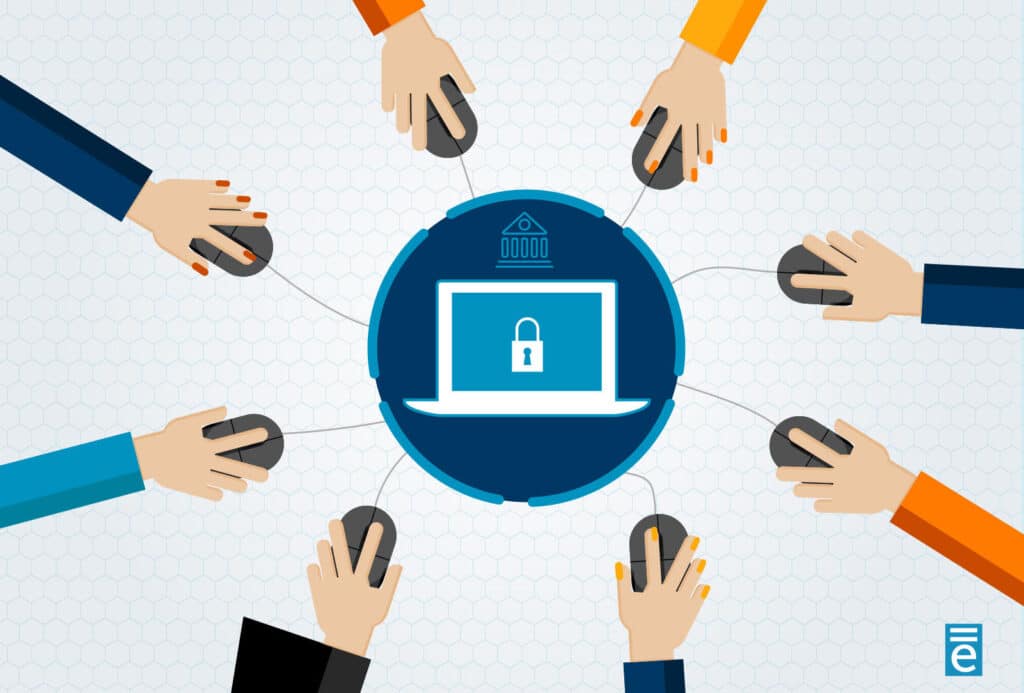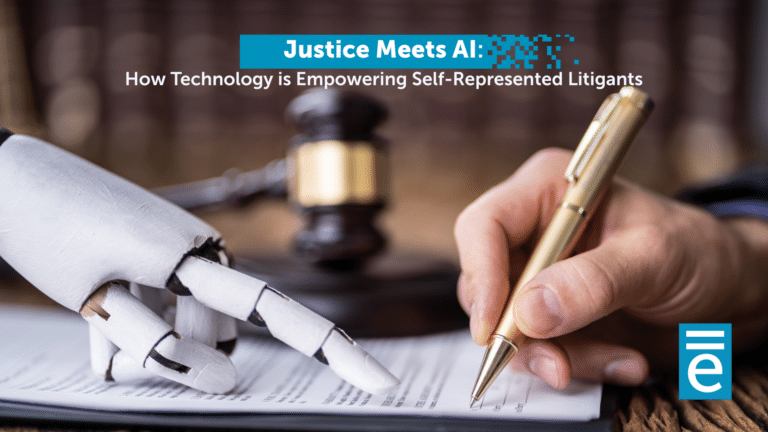Courts rapidly adopted technology at the pandemic’s start. Now they have the opportunity to combine remote and in-person proceedings and services to best serve justice and the public.
By Gary Egner, Director of Business Development
It’s safe to say America’s courts have never adopted technology as quickly as they did during the early days of the pandemic.
The two decades before had seen a slow rise in new technologies, like e-filing and e-notarization, and even slower adoption of platforms for digital hearings. Of course, even before the pandemic, courts relied on foundational technology like websites, word processing, email, and court management systems to coordinate court documents and financial data.
But like civilian bosses who valued having their employees in the office, many court leaders were reluctant to set aside the age-old tradition of in-person hearings. Perhaps they FaceTimed with their families, but court proceedings were a different matter.
Pandemic Pushes Adoption of Virtual Proceedings
Court leaders needed convincing that justice could still be served in a virtual world. COVID proved the case and changed the way our courts operate. The Pew Charitable Trusts calls civil courts’ rapid adoption of virtual technologies during the pandemic “unprecedented in pace and scale.” Some states went from zero remote proceedings before March 2020 to hundreds of thousands—or, in the case of Texas, more than a million—in the span of a year.
Remote hearings have advantages for courts and those they serve. For example, virtual proceedings may help courts reduce defendants’ failure to appear rates, as Maricopa County Justice Courts found in eviction actions held in February 2021. That month, 13% of defendants failed to appear, compared to about 30%–40% in 2019. But tech change doesn’t help everyone equally. Pew’s study of civil courts during the pandemic found that litigants with attorneys benefited more from the rapid technology adoption than those without legal representation, raising the need for processes to ensure fairness, transparency, and equal access.
Courts now have the opportunity to take what they learned during the pandemic and adapt and institutionalize it for a post-pandemic world. It’s a challenging task, but knowing how seriously courts take their commitment to justice, I know they’re up to it.
A Hybrid Approach Moving Forward: Virtual and In-Person
When I talk to my clients at courts across the country, the majority have accepted they can’t go back to zero remote proceedings or pretend the days of the pandemic Zoom court never happened. The general success of remote hearings and filings during the pandemic—a time when courts had to change or couldn’t achieve their missions of serving the public—has convinced judges and administrators that some level of virtual court is here to stay.
Court leaders have seen with their own eyes how technology allows them to provide constituents easier access to the justice system, a need that was there all along. There was no access to courthouses at the beginning of the pandemic, but appearing in person has always been challenging for some for varied reasons. Some had difficulty arranging time off, transportation, or childcare. For others, disabilities made getting to and being in court difficult. Holding shorter hearings virtually saves people time and makes multiple appearances easier to fit into their lives. For some, appearing in court is emotionally draining or physically dangerous.
The National Center for State Courts (NCSC)’s 2021 State of the Courts national poll found solid public support for video and telephone court appearances. People were more open to remote participation in certain cases, like traffic tickets and consumer debt, and not in others, like divorce and child custody proceedings.
Clearly, a thoughtful hybrid approach will enable courts to meet their own efficiency, cost savings, and justice needs while giving the public more choice in how they interact with courts. How that shakes out in long-term policy will vary from state to state. In its new Remote Proceeding Toolkit, NCSC reminds courts they don’t have to set policies alone. Instead, court systems should put in place state- or jurisdiction-wide policies using judicial principles like fairness, equality, safety, and transparency as guides. As they design their approach to remote proceedings, courts must gather feedback from a range of stakeholders, including judges, court staff, lawyers, court users, victims’ rights groups, and disability rights advocates.
Reliable, Competent Technology Integration Key for Both Virtual and In-Person Proceedings
It seems unlikely to me and many others in the industry that courts would ever become completely virtual, with no in-person elements or allowance for paper-on-demand. While every state has adopted video proceedings to some degree, the potential for broader use of electronic documentation and e-filing is slowed down by laws requiring notarization and “wet,” or handwritten, signatures on hard copies. Other jurisdictions are required by statute to keep a physical document archive. Those statutes will need adjusting before some courts can choose to move to paper-on-demand and virtual signatures.
In the early stages of the pandemic, courts had to set up virtual hearings quickly, so they turned to readily available platforms like Zoom and Teams. At equivant, we worked with them so they could, for example, access a Zoom link through our court management systems (CMS) and calendaring functions. Now that courts can carefully choose virtual court software specifically designed for their needs, we’re collaborating with various vendors and figuring out how to integrate. That way, courts who use our CMS can choose the complementary technologies that work best for their budgets and functional needs and link the two systems together.
At equivant, we believe courts can use virtual hearings and other technology solutions to keep communities safer, close cases more efficiently, reduce failures to appear, and help court personnel work more efficiently—while maintaining privacy and security. The work to adopt remote proceedings as a core court service is not done. As courts continue to explore what it means to combine virtual and in-person services, we recommend NCSC’s Remote Hearing Toolkit. We welcome you to contact us to discuss how to integrate CMS with remote proceedings, e-filing, and other tools of the modern court.
About Gary Egner
equivant, Director of Business Development
With more than 30 years of experience in the justice and public safety sectors in software application development, technical management, and project management, Gary Egner is a leading authority in helping courts and justice agencies serve their communities. Mr. Egner helps courts to navigate an often confusing and convoluted IT and software environment.
Focused on forward-thinking solutions and modernizing the industry, Mr. Egner has been a member of the IJIS Court Advisory Committee and numerous committees with the National Council of Juvenile and Family Court Judges. He also sits on the NIEMOpen Governance Board and has participated on numerous standards committees with the National Center for State Courts (NCSC), leading efforts to bring national data protocols and standards to the justice industry.





